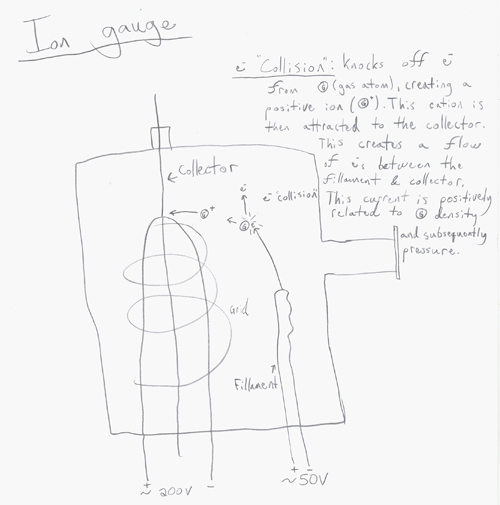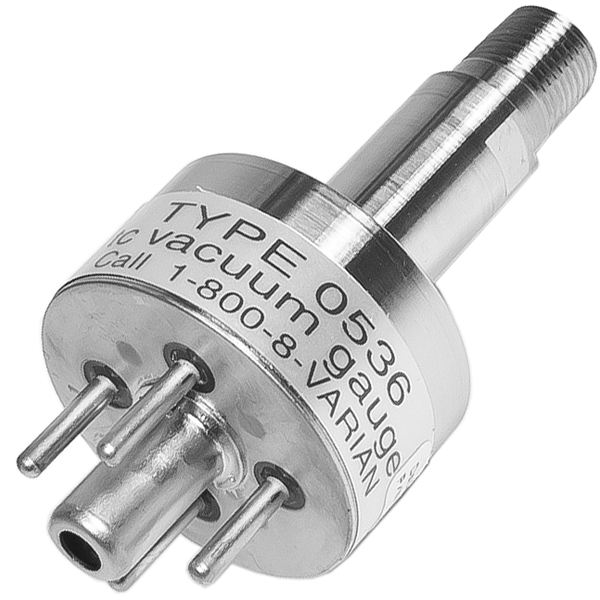Difference between revisions of "Pressure Sensor Technologies"
(Created page with "Intro: Pressure sensing technology that we use in the lab mostly revolves around ionic and thermal applications of gas properties. Ion and thermal couple gauges respectively. ...") |
|||
| Line 2: | Line 2: | ||
Ion Gauges: A filament is charged and produces free electrons. These electrons roam free in the low pressure system until they bombard a gas atom. This bombardment knocks off an electron from the gas atom, creating a cation. This cation is attracted to a collector which completes a circuit between the filament and the collector. This current is measured and is directly related to the density of the remaining gas and subsequently, its pressure. | Ion Gauges: A filament is charged and produces free electrons. These electrons roam free in the low pressure system until they bombard a gas atom. This bombardment knocks off an electron from the gas atom, creating a cation. This cation is attracted to a collector which completes a circuit between the filament and the collector. This current is measured and is directly related to the density of the remaining gas and subsequently, its pressure. | ||
| − | [[File:iongauge. | + | |
| − | Thermocouple Gauge: A heated filament is placed into the low pressure system and allowed to cool. The rate of heat loss is directly related to gas density and subsequently, pressure. | + | [[File:iongauge.jpg]] |
| + | |||
| + | Thermocouple Gauge (TCG): A heated filament is placed into the low pressure system and allowed to cool. The rate of heat loss is directly related to gas density and subsequently, pressure. | ||
| + | |||
| + | [[File:TCG.gif]] | ||
Revision as of 12:06, 15 June 2014
Intro: Pressure sensing technology that we use in the lab mostly revolves around ionic and thermal applications of gas properties. Ion and thermal couple gauges respectively.
Ion Gauges: A filament is charged and produces free electrons. These electrons roam free in the low pressure system until they bombard a gas atom. This bombardment knocks off an electron from the gas atom, creating a cation. This cation is attracted to a collector which completes a circuit between the filament and the collector. This current is measured and is directly related to the density of the remaining gas and subsequently, its pressure.
Thermocouple Gauge (TCG): A heated filament is placed into the low pressure system and allowed to cool. The rate of heat loss is directly related to gas density and subsequently, pressure.

